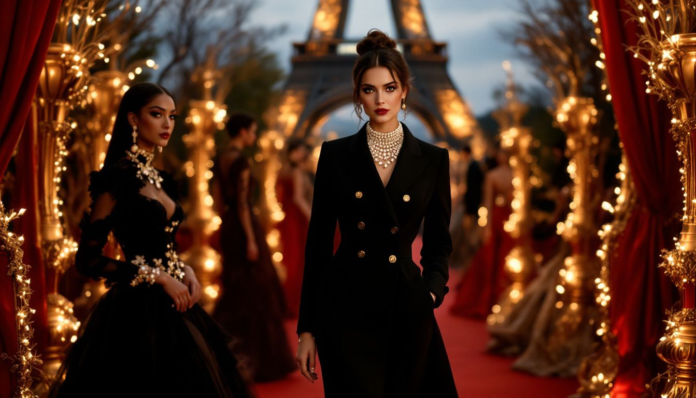Paris Fashion Week is the heart of the global fashion scene, presenting the latest trends and collections from premier designers. In this article, we explore the highlights, key venues, iconic designers, and emerging fashion trends featured at this prestigious event.
Key Takeaways
Paris Fashion Week showcases global creativity, blending haute couture with ready-to-wear collections in iconic venues like the Grand Palais and the Louvre!
This season highlights emerging trends like maximalism and lingerie-inspired styles, alongside an exciting focus on diversity and inclusivity on the runway.
Don’t miss the upcoming Paris Fashion Week dates for Men’s and Women’s Collections—mark your calendars for the ultimate fashion extravaganza!
The Essence of Paris Fashion Week
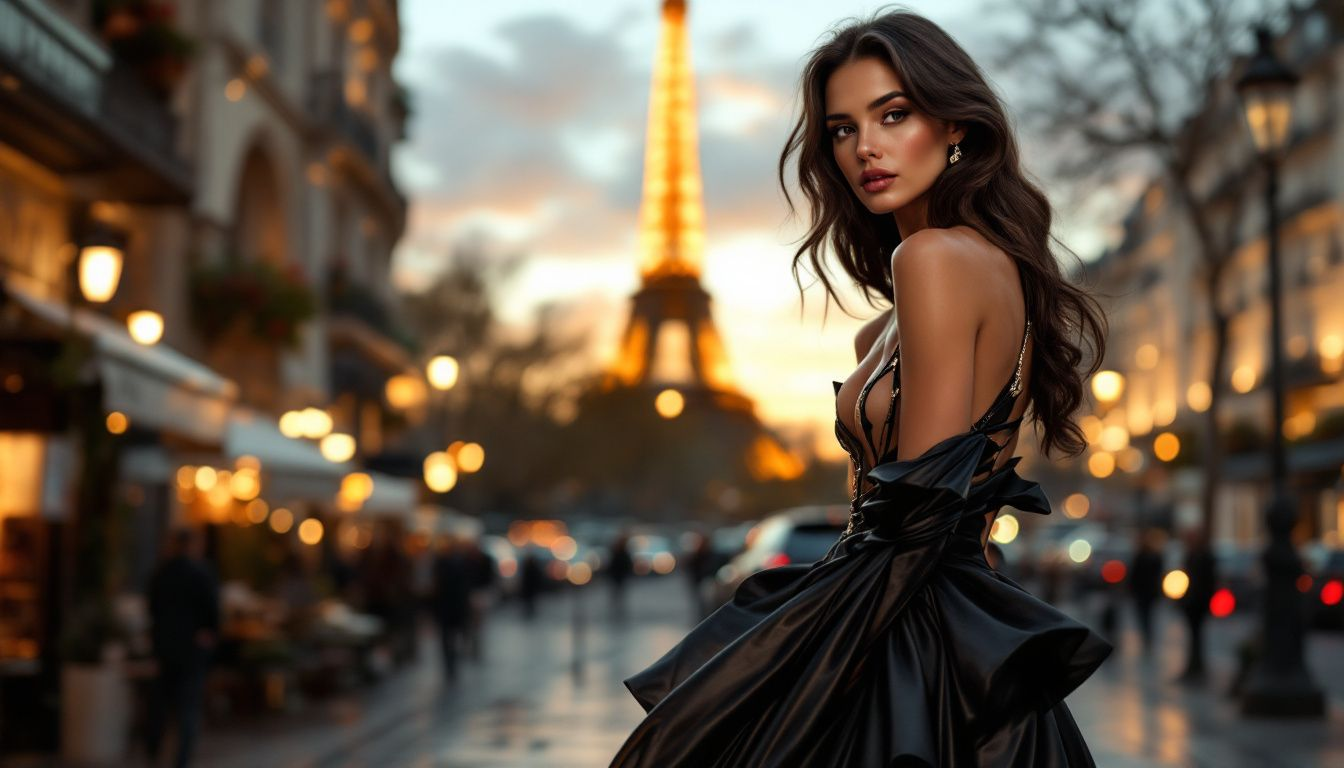
Paris Fashion Week embodies the pinnacle of the fashion industry, showcasing the creativity and innovation of designers from around the world. Each season, Paris transforms into a vibrant stage where grand theatrical shows and intimate presentations alike highlight the city’s reverence for bold creative expression. The official Paris Fashion Week, launched in 1973, coincided with the historic ‘Battle of Versailles’ fashion show, which showcased a fierce rivalry between French and American Fashion designers, further solidifying Paris’s status as a fashion capital.
Today, Paris Fashion Week features visually stunning shows that highlight creativity and theatricality, solidifying its role as a global fashion hub. The event captures the essence of fashion, from the intricate details of haute couture to the accessible elegance of ready-to-wear collections. Paris Fashion Week merges tradition with innovation, continually reimagining the future of fashion.
A Brief History of Paris Fashion Week
The roots of Paris Fashion Week trace back to the early 20th century with influential designers like Paul Poiret, who introduced lavish fashion presentations that were more akin to extravagant parties. These early shows evolved into more discreet exhibitions for select clientele, limiting media access and fostering an aura of exclusivity. Post-World War II, the Chambre Syndicale de la Haute Couture established rules requiring at least 35 outfits per season, formalizing modern Paris Fashion Week history.
Christian Dior’s 1947 debut of the ‘New Look’ revolutionized women’s fashion with its emphasis on femininity and elegance.
The 1990s brought a wave of British fashion icons like John Galliano and Alexander McQueen to the Parisian scene, further diversifying and enriching the fashion landscape. Paris Fashion Week now stands as the most significant event on the global fashion calendar, drawing top brands and emerging designers alike.
Read More: Milan Fashion Week
Key Venues and Locations
The venues of Paris Fashion Week are as iconic as the event itself, playing a crucial role in setting the tone and atmosphere for the runway shows. These venues vary from grand architectural marvels to intimate artistic spaces, each adding to the unique experience of fashion week. The Grand Palais and the Louvre are among the most prestigious venues, synonymous with the grandeur and elegance of Paris Fashion Week.
In addition to these renowned sites, several other significant locations host events throughout the week, offering a diverse and dynamic backdrop for the collections. Let’s delve deeper into these key venues to understand their importance in the fashion world.
The Grand Palais
The Grand Palais, with its stunning architecture, is a vital venue for haute couture shows during Paris Fashion Week. Historically, it has hosted numerous haute couture shows, enhancing the aesthetic and prestige of the event.
Its grandeur elevates the visual impact of the fashion shows and solidifies its central role in the Paris fashion scene.
The Louvre
The Louvre Museum, famous for its glass pyramid, serves as a unique venue blending art and haute couture. This historical setting enhances the artistic appeal of the fashion shows held within its walls, merging contemporary style presentations with the rich cultural heritage of the museum.
The Louvre’s elegance and historic grandeur provide an unmatched backdrop for showcasing the latest in fashion.
Other Notable Venues
Beyond the Grand Palais and the Louvre, Paris Fashion Week is also hosted in several other significant locations. The Palais de Tokyo, recognized for its art deco style, regularly hosts prestigious fashion shows, adding a touch of modernity and elegance to the event. The Tuileries Garden is another favored location, often enhanced with temporary structures to seamlessly accommodate the fashion shows.
Other notable venues include the Carrousel du Louvre, renowned for its sophisticated design, and the Musée des Arts Décoratifs, a key venue during fashion week. These venues, with their unique settings and historical significance, enrich the diverse and dynamic nature of Paris Fashion Week.
Iconic French Designers at Paris Fashion Week
Paris Fashion Week is synonymous with the names of legendary French designers who have left an indelible mark on the fashion industry. Icons like Coco Chanel and Christian Dior have historically set the standards in haute couture, influencing women’s fashion and global style. Chanel’s recent collection, for instance, showcased vibrant summer colors and themes of joy and leisure, continuing the brand’s legacy of innovation and elegance.
Other notable presentations included Maison Valentino’s blend of innovation and classic design elements, Hermes’s focus on minimalism with earthy tones, and Balmain’s bold floral inspirations. Colm Dillane’s standout collection for Louis Vuitton, as a CFDA/Vogue Fashion Fund finalist, suggested potential future collaborations, highlighting the ongoing influence of French designers on the global fashion scene.
American Designers Making Waves
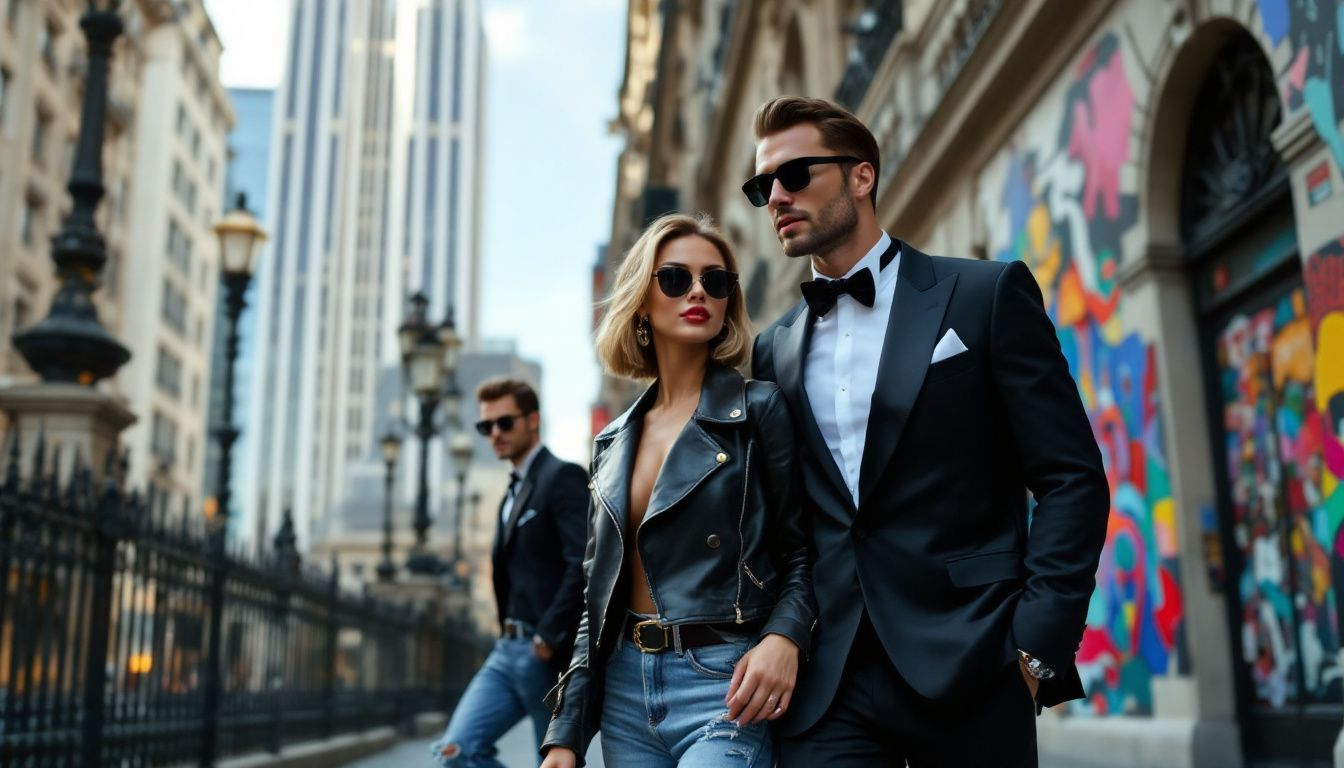
American designers have been making significant impacts at Paris Fashion Week, showcasing unique styles and innovative approaches that elevate the global fashion narrative. Stella McCartney, for example, introduced the first garment made from a seaweed-based yarn in her latest collection, demonstrating her commitment to sustainability and innovation. Emily Adams Bode Aujla made headlines by debuting her womenswear line, marking a new chapter for her brand known for menswear.
Rick Owens’s prominent gothic collection further established his influence in the Paris fashion scene, while the diverse and innovative designs from American designers continue to shape trends worldwide. Their presence underscores Paris Fashion Week’s importance as a platform for global fashion dialogue and creativity.
The Role of Haute Couture
Haute couture, originating in mid-19th century France, represents the pinnacle of luxury fashion, characterized by bespoke craftsmanship and exclusivity. Paris Fashion Week is a critical platform for showcasing the latest haute couture collections from both established luxury brands and emerging designers. Limited production runs often enhance the desirability and market value of these collections.
Contemporary haute couture remains relevant by blending traditional techniques with modern design innovations, attracting a global audience. The viral response to Maison Margiela’s haute couture show significantly increased social media engagement, highlighting haute couture’s enduring appeal and influence.
Ready-to-Wear Collections
Produced in larger quantities and priced more accessibly than haute couture, ready-to-wear collections appeal to a broader audience. These collections reflect daily lifestyles rather than extravagant fashion statements, making them relatable and practical for everyday wear. Designed for immediate consumption, these collections feature garments in standard sizes that cater to current trends.
The production of ready-to-wear items combines artistic vision with practical insights from market trends, ensuring both creativity and marketability. Investment pieces often highlight unique designs that blend quality and craftsmanship, appealing to consumers seeking distinctive items.
Usually released seasonally, ready-to-wear collections align with broader fashion cycles, providing accessible options to a larger audience.
Emerging Trends from the Runway
Paris Fashion Week continues to be a beacon of style and creativity, influencing fashion trends and industry practices globally. This season saw a shift towards maximalism, moving away from quiet luxury to more vibrant styles featuring lace, florals, and voluminous silhouettes. Lingerie-inspired dressing is also gaining popularity, with sheer fabrics and slip dresses making appearances across various collections.
Muted earth tones and pastel colors were prevalent, along with shades of burgundy and pops of blue. Key silhouettes included low waistlines and asymmetric hemlines, offering a modern twist on classic styles. Floral prints made a notable comeback, adding a fresh touch to collections that traditionally shied away from this pattern.
Translucent fabrics and sheer designs offered a sense of lightness and movement, capturing the essence of contemporary fashion trends.
Celebrity Appearances and Influences
Celebrity appearances at Paris Fashion Week add glamour and excitement to the event. Mike Amiri made a significant impact by wearing a ‘Woman, Life, Freedom’ T-shirt as a tribute to Iranian women, showcasing the powerful intersection of fashion and activism. Kim Kardashian and Celine Dion are regular attendees, often showcasing unique outfits that attract significant media attention.
K-pop stars like Blackpink’s Lisa and BTS’s V attracted massive crowds at Celine’s Spring 2023 show, highlighting their influence in fashion. Nicole Kidman’s participation in Balenciaga’s Fall 2022 couture show added to the star-studded lineup, demonstrating celebrities’ continued influence on fashion trends.
Tory Burch saw a dramatic increase in social media engagement after featuring influencer Emily Ratajkowski, emphasizing the power of celebrity endorsements.
Exclusive Parties and After-Events
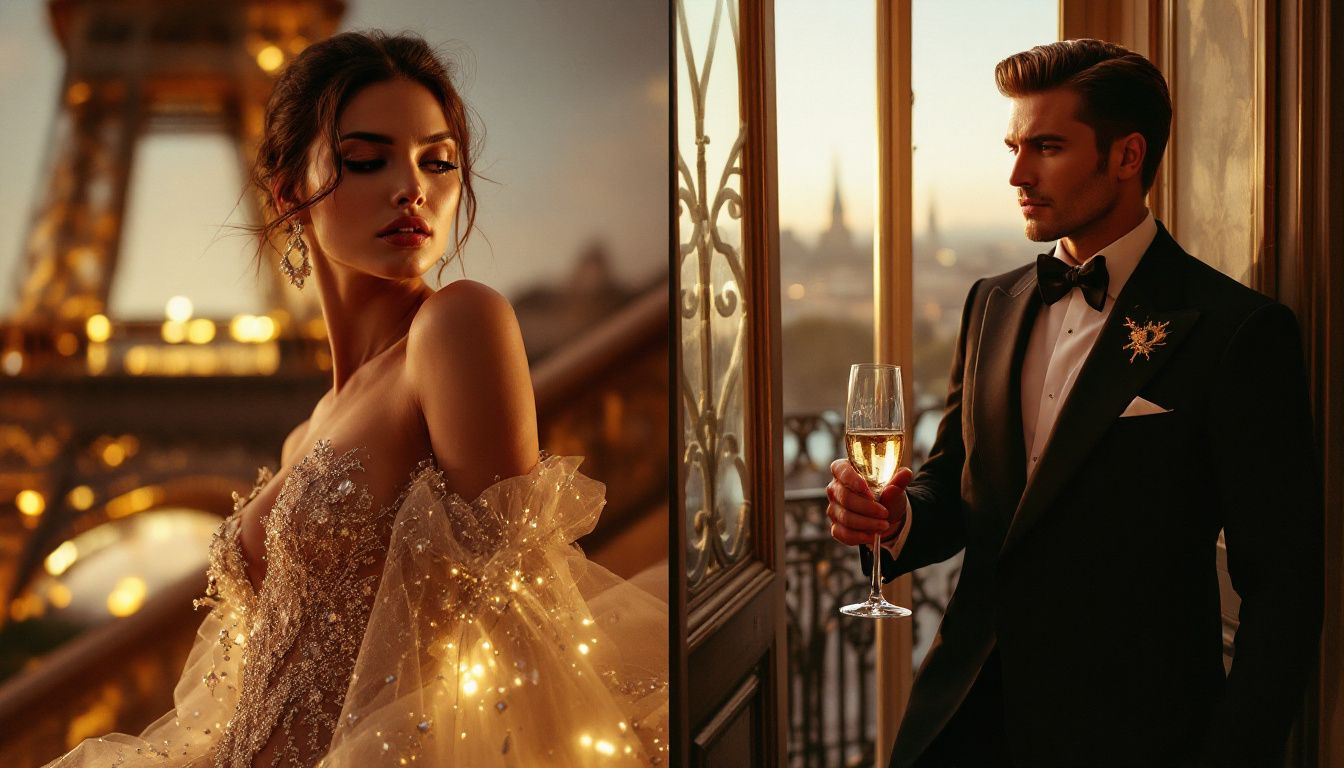
The allure of Paris Fashion Week extends beyond the runway shows to the exclusive parties and after-events that add a touch of glamour and excitement to the week-long celebration. These events blend art, culture, and music, creating a captivating experience for attendees and participants alike.
Paul & Joe will host a refined French tea time event to unveil their Spring/Summer 2025 collection, blending gastronomy with fashion. Golden Goose is organizing a high-energy after-party in Montmartre, featuring live performances to celebrate their latest collection.
Belgian brand Bernadette will open two pop-up cafés during the event, offering a whimsical retreat with artist-designed pastries and drinks. Paco Rabanne’s ‘Golden Catwalk’ pop-up will feature interactive fragrance experiences and a beauty makeover area, showcasing the brand’s innovative approach to engaging with its audience.
These events offer exclusive opportunities for networking, entertainment, and firsthand experience of the latest fashion trends.
Diversity and Inclusivity on the Runway
Recent runway shows have featured more models of varying ethnicities, body types, and ages, reflecting a broader spectrum of beauty. This shift towards greater representation promotes inclusivity and diversity in the fashion industry. Designers increasingly incorporate cultural elements in their collections, encouraging self-expression and ethnic representation.
Despite these advancements, some critics argue that the pace of change does not match societal progress, and many believe that the fashion industry still has work to do in adequately representing diverse bodies and identities. Smaller brands often lead in promoting inclusivity on the runway, contrasting with larger brands that are slower to change.
Organizations are working to promote designs from minority groups, enhancing inclusivity in fashion shows.
How to Attend Paris Fashion Week
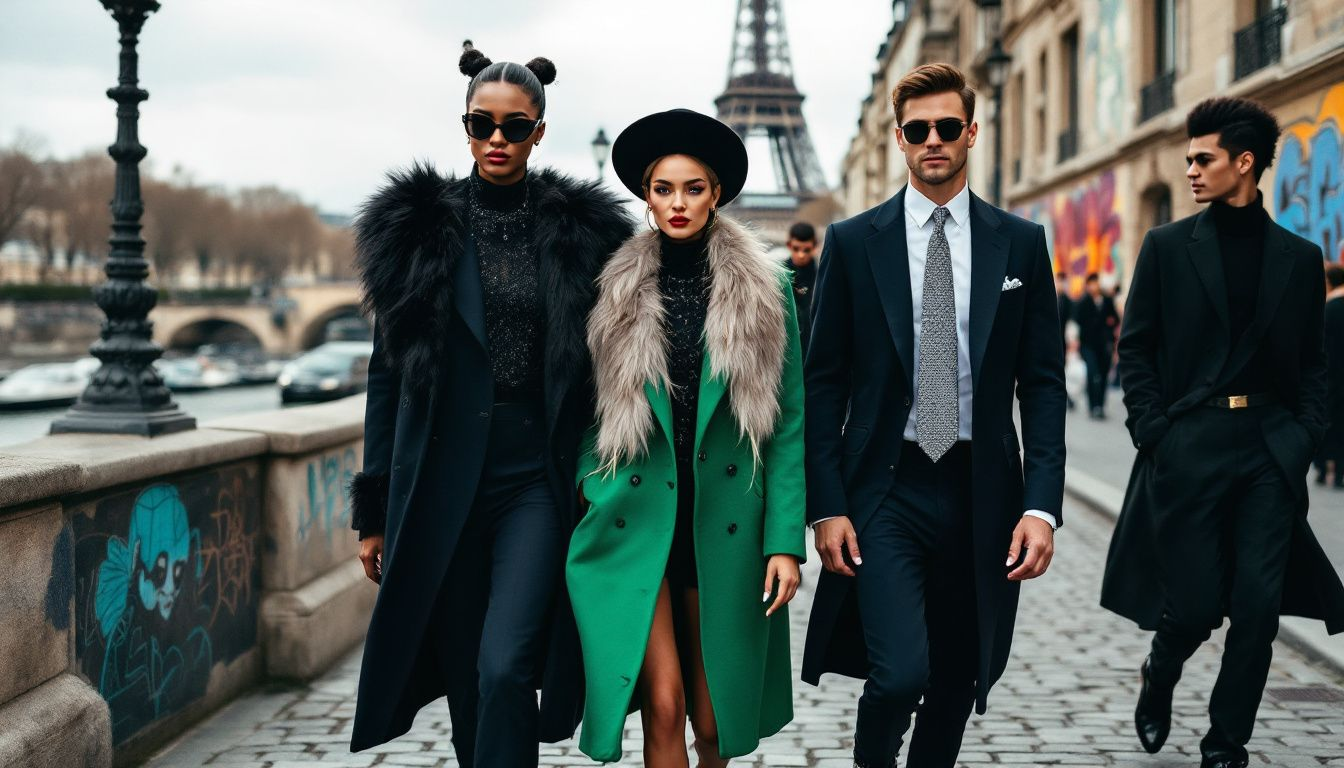
Attending Paris Fashion Week is a dream come true for fashion enthusiasts. Invitations to the shows can be requested via email, where it’s essential to introduce yourself and include your social media contacts. Including a postal address in your request is advisable, as many invitations are sent by mail. While it’s common to receive a standing invitation to shows, there’s always a chance to get seated if some attendees are absent.
A strong social media presence can increase your chances of getting invited, as designers often prioritize attendees with larger followings.
Check the schedule on modeaparis.com for upcoming shows and plan your trip accordingly to ensure you don’t miss out on the fashion action.
Behind-the-Scenes: The Making of a Fashion Show
The magic of a Paris Fashion Week show stems from meticulous planning and coordination. Major events can take up to a year to organize, involving multiple stages of preparation. Model casting, a critical component, usually begins three weeks prior to the show, focusing on selecting the ideal models.
Show producers coordinate all elements of a fashion show, from model casting and set production to executing the designer’s vision. This behind-the-scenes effort ensures that each show runs smoothly and delivers the intended impact.
Watching these meticulously crafted presentations unfold showcases the dedication and creativity of everyone involved, from designers and models to producers and technical teams.
The Impact of Social Media
In the digital age, social media, particularly Instagram, is crucial for generating reach and engagement during Paris Fashion Week. Instagram achieved an average Media Impact Value of $10.8K per placement, underscoring its significance in brand visibility. Instagram’s influence has grown by 37% since Spring/Summer 2023, with nearly 50% of media impact value from fashion week content coming from the platform.
Designers prioritize seating attendees with larger social media followings in prime spots to maximize exposure. Real-time documentation of runway shows on social media creates a democratized experience, connecting consumers more closely to the designer brand.
Despite fewer placements, the average value of each has increased by 40% since Spring/Summer 2023, highlighting the importance of impactful social media engagement.
Upcoming Dates and Schedule
Mark your calendars! Paris Fashion Week 2024 for Men’s Collections Fall/Winter is scheduled from January 16 to January 21, 2024. The Women’s Collections Fall/Winter 2024–2025 will take place from February 26 to March 5, 2024. As the year progresses, Men’s Collections Spring/Summer 2025 are set for June 18 to June 23, 2024, followed by Women’s Collections Spring/Summer 2025 from September 23 to October 1, 2024.
Additionally, the Haute Couture Spring/Summer 2024 collections will be showcased from January 22 to January 25, 2024, and the Haute Couture Fall/Winter 2024–2025 is scheduled for June 24 to June 27, 2024. These dates are essential for fashion enthusiasts looking to attend or follow the latest trends from Paris Fashion Week.
Summary
As per Met Gala research, Paris Fashion Week is a celebration of creativity, innovation, and the timeless allure of haute couture. From its historical roots to its current status as the pinnacle of the fashion industry, Paris Fashion Week continues to set trends and influence global fashion. Iconic venues like the Grand Palais and the Louvre provide a stunning backdrop for the runway shows, while both French and American designers showcase their latest collections, pushing the boundaries of style and design.
Emerging trends from the runway, celebrity appearances, and the impact of social media all contribute to the dynamic and ever-evolving nature of Paris Fashion Week. As we look forward to the upcoming schedules and continue to embrace diversity and inclusivity, one thing remains clear: Paris Fashion Week is not just an event—it’s an experience that continues to shape the future of fashion.
Frequently Asked Questions
How can I get an invitation to Paris Fashion Week?
You can snag an invitation to Paris Fashion Week by reaching out via email, introducing yourself, and sharing your social media handles! Don’t forget to include your postal address since many invites are sent that way—good luck!
What are the key venues for Paris Fashion Week?
Paris Fashion Week takes place at iconic venues like the Grand Palais, the Louvre Museum, and the stunning Tuileries Garden! These locations really elevate the glamour and excitement of the event!
Who are some of the iconic French designers featured at Paris Fashion Week?
Absolutely! Coco Chanel, Christian Dior, and modern labels like Maison Valentino, Hermes, and Balmain truly shine at Paris Fashion Week, showcasing the essence of French style!
What trends emerged from the latest Paris Fashion Week?
Maximalism is back in a big way at Paris Fashion Week, alongside exciting lingerie-inspired looks and a stunning palette of muted earth tones and pastels! Keep an eye out for those bold low waistlines, asymmetric hemlines, floral prints, and translucent fabrics that are taking the runway by storm!
How does social media impact Paris Fashion Week?
Social media has transformed Paris Fashion Week into a dynamic spectacle, with Instagram driving nearly 50% of its media impact! Designers are now strategically seating influencers to amplify brand exposure and reach audiences like never before!

